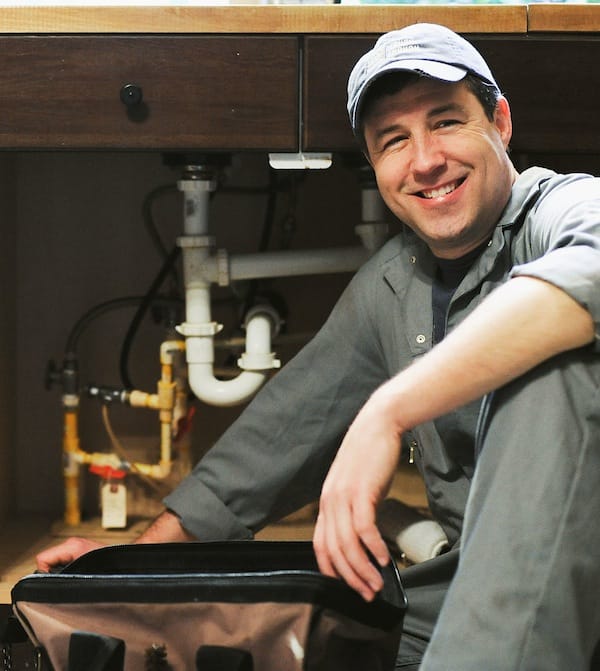If you are in the process of setting up your own business then you may be researching how it’s best to do this. Running your own business has many benefits including not having to answer to a boss. It can be tricky getting everything right but when you do, your business will go from strength Read more
Goals

If you are in the process of setting up your own business then you may be researching how it’s best to do this. Running your own business has many benefits including not having to answer to a boss. It can be tricky getting everything right but when you do, your business will go from strength to strength.
Check out the article below to find out more about the benefits of having your own business and how you set it up.

Benefits
Set Your Own Hours
When you decide to start your own plumbing business, one of the best benefits can be choosing your own hours and finishing when you want. When you work for a company, you can be restricted on working set hours that the company chooses. Many plumbers enjoy setting their own as it gives a bigger sense of freedom.
Choose Your Rate Of Pay
Another wonderful benefit of having your own business is setting your own rate of pay. This can be a bit tricky as you want to charge enough to make a living but not too much that you don’t get any customers. Make sure you do your research to find out how much other plumbers are charging in your area.
Decide Where You Are Going To Work
There are various places you can work and cover as a plumber. You could be a residential or commercial plumber, commercial plumbers will work in many businesses ensuring they can stay open and not close due to pipes, drains, or toilet issues. Residential plumbers enjoy working with members of the general public so figure out which option is best for you. Of course, you might decide to cover both.
How To Get Started
Here’s a quick guide on how you can get your plumbing business off the ground.
Be Prepared
It is essential you take the right training to become a plumber as you need to know what you are doing. Research different courses and attend these in full, it is also useful to gain different types of experience while training. It might be beneficial to learn on the job, such as undertaking an apprenticeship.
When you have fully trained you will be able to set your rate of pay slightly higher than those still studying.
Do Your Research
When you are just starting out, it is important to carry out market research and know who your target audience is. This will come when you decide where you are going to work and which areas you are going to cover. You will need to choose areas around where you live and see if there is a calling for plumbers. Also check businesses to see if they are already working with a plumber and how much they pay for the privilege.
Know Your Goals
Lastly, all businesses need to set goals for themselves. This is so there is something to work towards and an end result. Set yourself SMART goals for the next year and where you see yourself in five years. For instance, you could hire more staff and take on more training courses.

Do you have a strategy for your social media? How does your customer base see you on social media? Are you reaching new customers? These are all great questions as a business owner you should ask yourself when doing social media. You should also be asking your social media partner these questions and how are Read more
Do you have a strategy for your social media? How does your customer base see you on social media? Are you reaching new customers? These are all great questions as a business owner you should ask yourself when doing social media. You should also be asking your social media partner these questions and how are they going to help achieve your goals.
There is a lot more that goes into social media than just putting out an organic post or wanting to run ads on Facebook or Instagram. Just like any other form of media you need to have a strategy and need to have a full funnel approach to make sure you are able to capture new and existing clients wherever they are at in their buying cycle.

We are going to talk about 5 tips when doing social media in the trades.
First Tip: Goals
What are your goals for social media? Is it lead generation, traffic to the site, brand awareness, engagement, etc.? Understanding each of these goals will determine how you go after your existing and new customer base. You should have separate budgets for each goal so that you know exactly how each campaign and goal is performing. You need to set up each campaign based on your goal and make sure that each creative matches what the goal is.
Second Tip: Creative
Creative is key for social media. Creative needs to match your brand, audience, and platform that you are going after and engaging. When looking at social platforms, understanding who the end user is going to be on the other end is crucial. You need to match your creative to the platform and the audience who is consuming that media. You also have to look at what your goal is for each campaign. If you want them to fill out a form for an estimate or get more information that creative needs to guide the end user to filling out a form either on your website or through their social platform. All creatives must have a strong call to action (CTA) for what YOU want them to do. Once you know how you want your new potential customer to interact with your company, tracking is going to be KEY!
Third Tip: Tracking
Tracking is crucial for you to not only see your ROI, but also understand how your customer base and new potential customers are interacting with your brand. Tracking in Facebook ads, Facebook events manager and Google Analytics is key.
What is a conversion for your business? Phone call, form fill, chat, or scheduling an appointment? Once you know what a conversion is, work with your social media partner to make sure that you are measuring the same data points. What is the goal of each campaign as a lead generation campaign is going to be measured differently than a website traffic campaign? Make sure that you are setting up conversions and understanding the data and how many touch points your customers and potential customers need prior to converting is important to your strategy. This is why doing the full funnel approach is critical to any successful campaign. We already know that your average consumer needs four to seven touch points prior to converting.
Fourth Tip: Platforms
What social media platforms should you advertise and post on? This also plays into goals, as we want to match the correct platform for your goals. Not all social platforms will match your goals. There are so many social media platforms that you can go after. You will look at each platform and evaluate each one to see what makes the most sense for your business and your end user. The creative will also need to be a little different for each platform for the end user. When looking at goals your social media partner should make the recommendation of which platform makes sense and what the creative should look like.
Fifth Tip: Results
Reviewing your results each month is important. Measuring the metrics monthly will allow you and your social media partner to determine if a campaign needs to be adjusted. This could be the creative, the audiences, location, or starting to use A/B creative in the campaigns. Testing will help determine if you need to make adjustments, but starting everything all over again. This will also give you insights into what works during the year and going back to best practices and creative each year. It is extremely important for you to create the ads manager yourself so that you can also keep historical data. Social media can help with additional touch points within the customer journey. How you work your social media strategy will help with your business goals, engagement with your existing customers and new customers, plus bringing brand awareness.
Social media is a platform that all trades should be part of. We all do some much for the communities and helping others in need of help and your customer base and new customers want to see that you are part of their community. When you are part of a community you want to support local business. This is what social is all about and these are some of the items that you want to incorporate into your strategy, but also post on a regular basis to show the community that you are there for them.
Organic social posting should also be discussed during your social media evaluation. Too many businesses are forgetting about organic posting. You should be posting two to four times a week, and it should be a mix of culture, reviews, education, and promotions. Getting more of your organic followers to be engaged with your organic posts will help others see them. Boosting organic posts will also help your brand to be seen. Just remember boosting is a different strategy than a paid strategy. Hopefully this article has sparked your interest to review your social strategy. Really look to see if you are getting the most out of it!
 Chris Yano is CEO of RYNO Strategic Solutions.
Chris Yano is CEO of RYNO Strategic Solutions.
